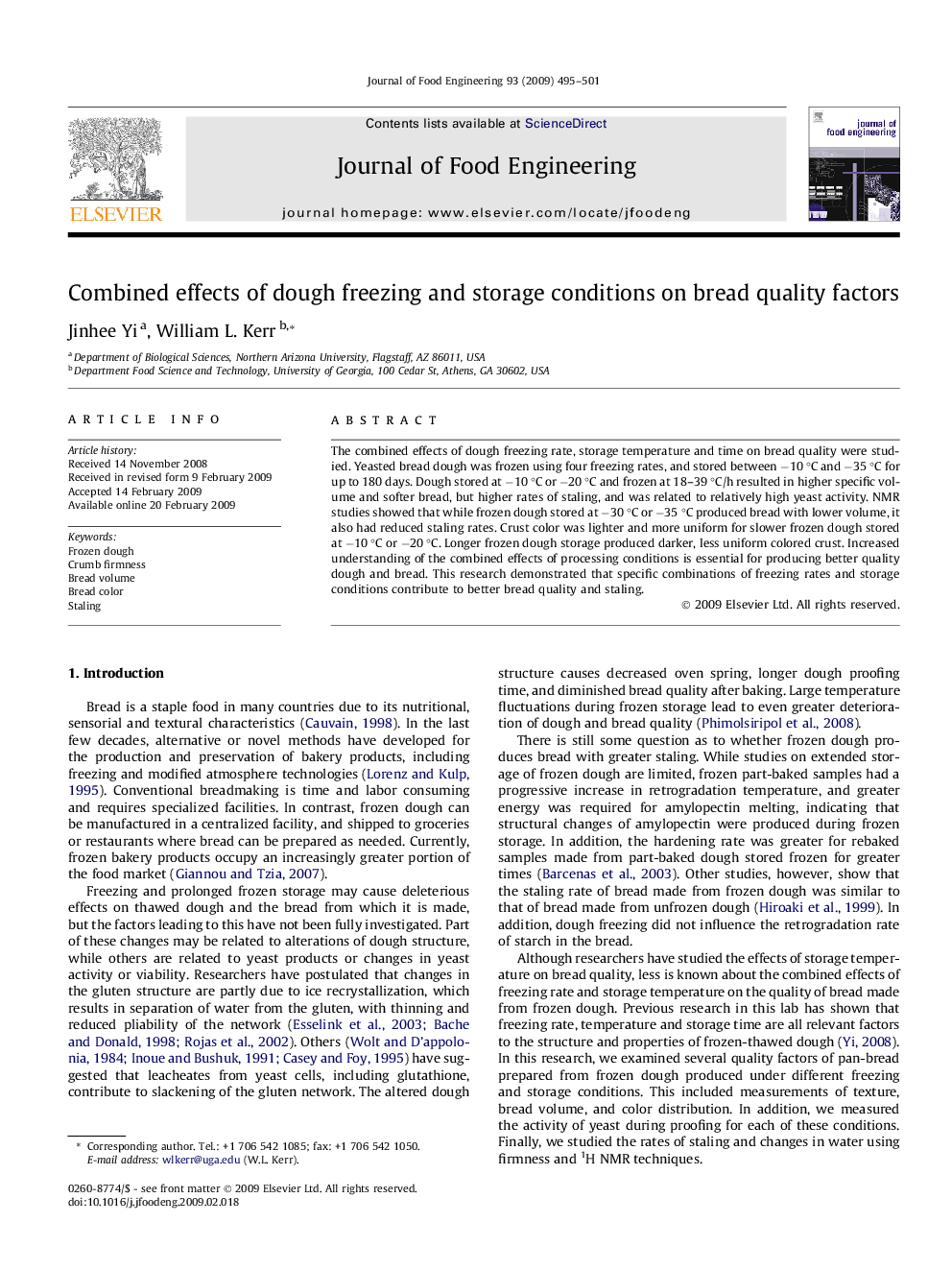| Article ID | Journal | Published Year | Pages | File Type |
|---|---|---|---|---|
| 224570 | Journal of Food Engineering | 2009 | 7 Pages |
The combined effects of dough freezing rate, storage temperature and time on bread quality were studied. Yeasted bread dough was frozen using four freezing rates, and stored between −10 °C and −35 °C for up to 180 days. Dough stored at −10 °C or −20 °C and frozen at 18–39 °C/h resulted in higher specific volume and softer bread, but higher rates of staling, and was related to relatively high yeast activity. NMR studies showed that while frozen dough stored at −30 °C or −35 °C produced bread with lower volume, it also had reduced staling rates. Crust color was lighter and more uniform for slower frozen dough stored at −10 °C or −20 °C. Longer frozen dough storage produced darker, less uniform colored crust. Increased understanding of the combined effects of processing conditions is essential for producing better quality dough and bread. This research demonstrated that specific combinations of freezing rates and storage conditions contribute to better bread quality and staling.
